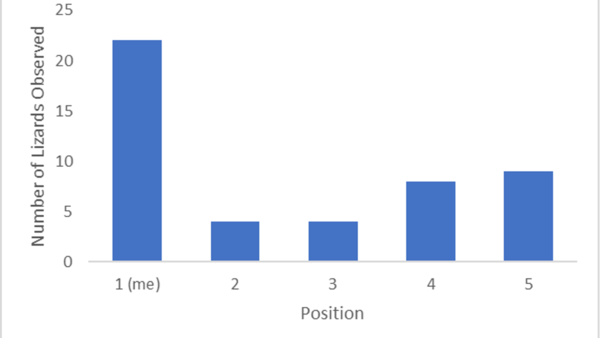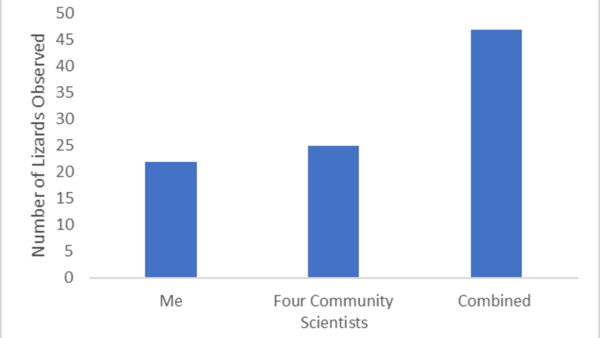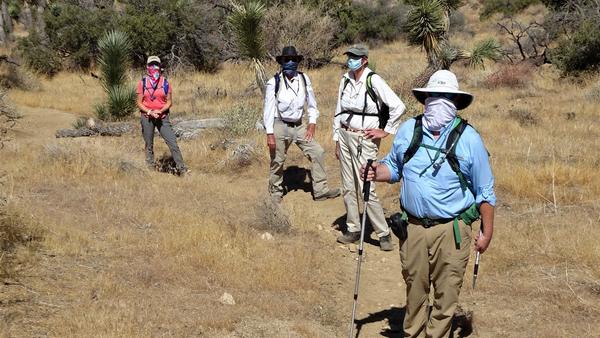Quantifying the value of community scientists
Back in 2016 I published a paper that quantified the added value of volunteer community scientists contributing to field surveys of lizards in Joshua Tree National Park. The reason for the paper was that there was and, in some cases, still is a cultural bias ingrained in many professional scientists against the quality of the data that volunteers collect. If I was going to incorporate citizen scientists into my research, I needed to demonstrate that citizen science collected data were at least as accurate as data collected by “professionals."
For that study we sent a pair of National Park biologists to survey lizards on a half a dozen 300 x 300 m plots. Then I brought a group of 5-7 community scientists out to the same plots a few days later and together we resurveyed each plot. The results were unequivocal. On every plot the community scientists and I counted at least twice as many lizards. More eyes, even if those eyes did not earn a university degree in science, equal more sightings, and so a more complete assay of the lizard population.
Science is perhaps the only way of gaining knowledge that requires going back and repeating experiments to be sure that conclusions are robust. One experiment or one observation is not conclusive. So yesterday, back in the National Park, four community scientists (Tracy Bartlett, Larry Heronema, Jane Spider Fawke, and Pete Schwartz) and I set out to repeat that experiment once again. This time we changed things up a bit; rather than large square plots, we conducted linear surveys along an existing public trail (the Panorama Loop Trail – 7 miles from start to finish) out of the Black Rock campground area. My question was, walking single file along the trail, how many additional lizards were seen by each position in that line-up. I was always in the lead, so my counts were the same as if I was conducting the survey by myself. The 2nd through 5th positions were rotated among the citizen scientists to avoid any observer ability effect. Here are our results:
It should not be any surprise that the first person in line, whether it is me or someone else, would see more lizards. The interesting finding was that each and every position was able to contribute additional sightings, even the last person in line saw lizards that the first four had missed. The reason is that the first person will see the obvious lizards sitting out in the open, and those that move right away, but some lizards sit tight hoping their camouflage will protect them. But, as the next four people walk by, the lizards “lose their nerve” and dart for cover. How long it takes each lizard to dart, dictates which person in line sees it. But then how does that compare to my findings in the 2016 paper? It turns out that the cumulative addition of those four community scientists more than exceeded my count alone. Our combined count was more than double the number of lizards I would have seen if I were by myself – precisely the same conclusion of that I came to back in 2016.
There is no question that community scientists make a huge contribution. In another paper that I am in the final “polishing stage” on before submitting it to a journal for peer review, five California Naturalist community scientists will be included as co-authors because their contributions unquestionably warrant that honor. Not only are the data better, much better, but the discussions we have while counting lizards are tremendously helpful to me for clarifying what questions to address. Yesterday there was much speculation as to what seemed to be fewer lizards than we expected to see. It turns out those musings were right. Comparing surveys made in September-October of each year, in 2018, a drought year, we saw 42 side-blotched lizards. Last year, a wet year, we saw 76, and this year (also a wet spring) we saw just 37. Why? That’s where those in-the-field group discussions get fun. We did notice a huge increase in California scrub jays this year; they are omnivorous and would be pleased to gobble down a small lizard. So perhaps successive wet years allow predator populations to build up and then create a top-down dampening of the side-blotched lizards’ ability to build their populations. Another question to explore and just another way that community scientists contribute to better science.
However, this pandemic, which has created challenges at every level of our lives, has made it hard to do community-based science and keep everyone safe. We are finding ways that seem to work: small groups of folks who are taking their health and safety, and those of others seriously, masks, and physical spacing. Going forward, because this pandemic will not last forever, if any of you are interested in joining our “Community Science Collaborative” please let me know.
I am adding a group shot from yesterday’s survey, plus a images of a western fence and desert spiny lizard we saw along the trail.
Go outside, tip your hat to a lizard, and be safe.



